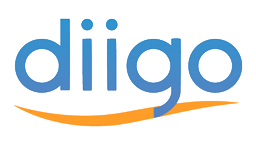The social bookmarking, web annotation and research tool Diigo is launching a redesign and refresh today. The site has 7 million registered users, but the boot-strapped company is seeking a path to profitability. The founder tells TechCrunch the simple fact Diigo is alive and kicking, while many players in the space have failed, reveals some important lessons.
Diigo (pronounced Dee’go) launched in 2005 as an online bookmarking site. It soon added the ability to annotate and collect the web by highlighting and adding sticky notes to webpages. At the time, TechCrunch Founder Michael Arrington wrote that he liked Diigo but questioned how many of these sites “can make the cut”.
Eight years later, we have the answer. Not many. A survey by Hypothes.is shows that of 56 companies that tried to build annotation tools, most are either Defunct, Living Dead, or have Limited Use. The five that remain in wide usage are Diigo, Mendeley, DocumentCloud, RapGenius, and Goodreader. Both Mendeley and Goodreader are only tangentially related to annotations. While Rapgenius annotates its own sites, Diigo lets users annotate the whole web.
Wade Ren, the Executive Chairman and a founder at Diigo, says the reasons Diigo and VC-funded Rapgenius became the only survivors in the annotation space is they “both make annotation part of something bigger. Rapgenius uses annotation to build destination sites. Diigo makes annotation a part of a rich tool for personal knowledge management.” Ren says he’s learned that annotation alone can’t be a success. That’s why Diigo has added social bookmarking, collaborative research, screenshot and picture saving, page caching and other information management tools.
Google’s Goal To Annotate The Web
Few people realize it, but the concept of annotating the web helped Google to its path to success. In a 2003 talk by Google Founder Larry Page, a note taker captured this quote (highlighted on a Diigo page, which demonstrates a key Diigo sharing feature):
“It wasn’t that we intended to build a search engine. We built a ranking system to deal with annotations. We wanted to annotate the web–build a system so that after you’d viewed a page you could click and see what smart comments other people had about it.”
The system they built was called PageRank, and Page said “only later did we realize that PageRank was much more useful for search than for annotation.”
Diigo’s New Features
Diigo’s new website makes it easier to use and looks cleaner. Search has been vastly improved and now includes full text search for the pages that are bookmarked. They also introduced a new logo and a redesign of the Diigo Web Collector, a Chrome browser extension.
With this tool, you can add a sticky note or highlight text on a webpage. If you visit that page in the future, those notes and highlights will appear on the page. The Diigo extension icon gets a red bookmark symbol added when you visit a bookmarked page, and yellow dots next to the scroll bar jump you to the location of your annotations.
One great use for Diigo is its integration with Google search. Similar to the tool from Evernote, if you turn the option on in the extension, a Google search will also search your Diigo library and display a box linking you to those results. If a web search leads you to a site you want to remember, just save it in Diigo, and the next time you search Google, you will be able to find it again right away. You don’t need to remember that you saved the page to Diigo, since the Google search will find it. No need to remember to visit Diigo’s site either.
Diigo is also coming out soon with an update to its browser on iOS for iPad and iPhone when it gets Apple approval’s.
Diigo operates on the freemium model. You can use it for free and save an unlimited number of bookmarks. Unlimited cached pages and screen captures cost $40 a year.
The Competition
In addition to all the failed companies in the annotation space, Diigo overlaps with many popular companies doing other parts of what Diigo does.
Pocket and Instapaper do a great job offering the ability to read something later, also a feature of Diigo. Adding a link to Pocket or Instapaper can be done with very little friction. Just one click. Adding a link to Diigo to read it later takes 2 clicks (one on the extension, and the next to Read Later.) Adding an annotation takes a bit more work. It’s still pretty quick but does take a little more effort to become a habit.
Evernote, another freemium business model, allows you to capture anything and save it. But Evernote stores it in a digital notebook. While Diigo stores your list of bookmarks and can cache pages, it also offers the overlay of your highlights and notes when you view the saved page in your browser.
Delicious was once the king of social bookmarking. The site was acquired by Yahoo in 2005, but appeared on a list of Yahoo projects to be sunsetted in 2010. This helped Diigo gain some new users, including myself. Yahoo sold Delicious to Chad Hurley and Steve Chen and its been re-launched. While you can bookmark sites and add tags and notes, it doesn’t offer the robust features of Diigo, including annotation.
Diigo has gained a stronghold with teachers and students, who make up 20 percent of its active user base. Highlighting, adding notes, and sharing them are a natural fit for education.
The team at Diigo knows that annotating webpages is not for everyone. But they believe there is a need for it. While they don’t claim to know how big the market is, this refresh is designed to prove that their tool is going to be the one that survives.
